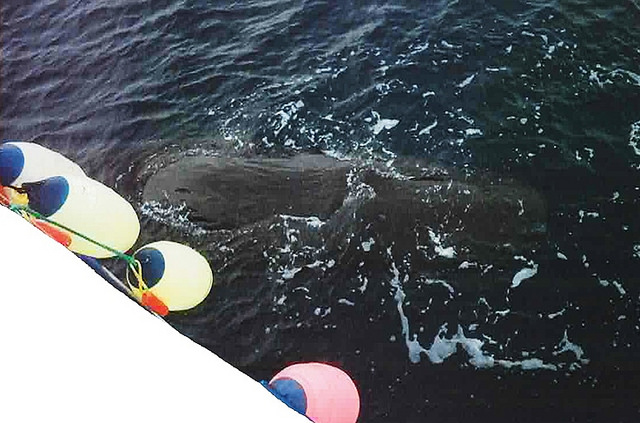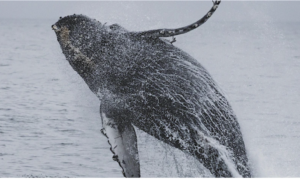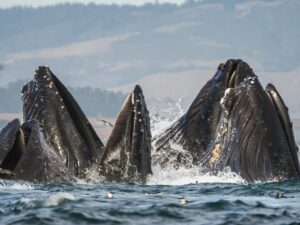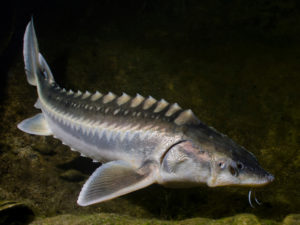Drift gillnets are a fairly ineffective method at capturing swordfish and thresher shark.
The nets are suspended like underwater curtains, a mile long and more than 600 feet wide, and anything that swims into them can get entangled.
In the deep sea waters off the California coast that’s meant everything from sea turtles to gray whales, as well as dozens of other species. Environmental groups call California’s drift gillnet fishing industry one of the nation’s deadliest catches, since more than 60 percent of what’s caught in the nets gets tossed away. They now have the images to lend drama to their statistics.
In February, the nonprofit Oceana obtained a treasure trove of photographs from the National Oceanic and Atmospheric Administration (NOAA) in a public records request. The images — nearly 500 taken from 1997 to 2011— show a gruesome scene of hundreds of dead marine life entangled in nets. The images were obtained by NOAA observers who are by law stationed on fishing boats.
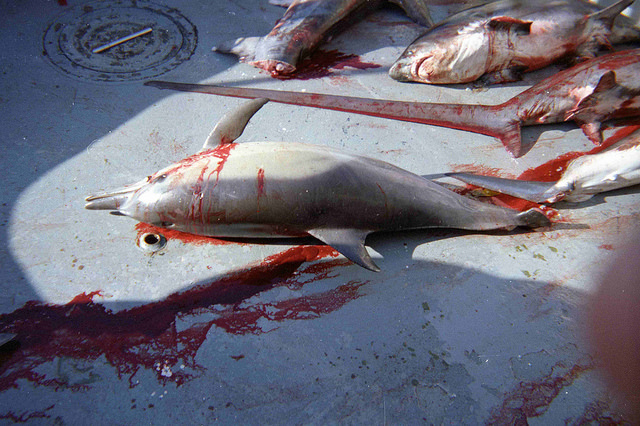
“I think the images really bring the issue home,” said Ashley Blacow, an Oceana spokeswoman. “You can talk about the specifics all day, and you get an idea from the numbers — 61 percent bycatch — but to actually see these images and verify that the fishery is really taking some of California’s most iconic marine life really hits home.”
In the 37 years since the industry’s founding, the tide may be finally turning against this practice. In 2010, two endangered sperm whales were ensnared in the nets (one died, the other was seriously injured) and the incidents drew an immediate reproach from federal agencies. The National Marine Fisheries Service passed an emergency rule that would have shut down the industry altogether for the fishing season if another sperm whale got trapped (that rule lapsed in January and hasn’t been reinstated as federal regulators seek a permanent one). Sixteen sperm whales have been trapped in drift gillnets since 2007. Regulations have only been getting tighter.
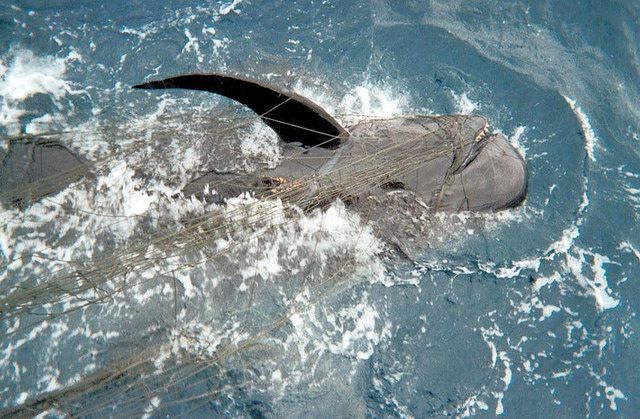
Perhaps because of this, as well as a dip in catch numbers, most California drift gillnet fishermen have been inactive, holding onto their permits but not sailing the high seas (there are currently only 16 active permits). Voters banned drift gillnets in state waters (0-3 miles offshore) in 1990, but California continues to permit the use of these nets in federal waters (3-200 miles offshore).
Consumers, too, have been moving away from high-mercury species like swordfish and shark, and many have turned to so-called “sustainable seafood” alternatives.
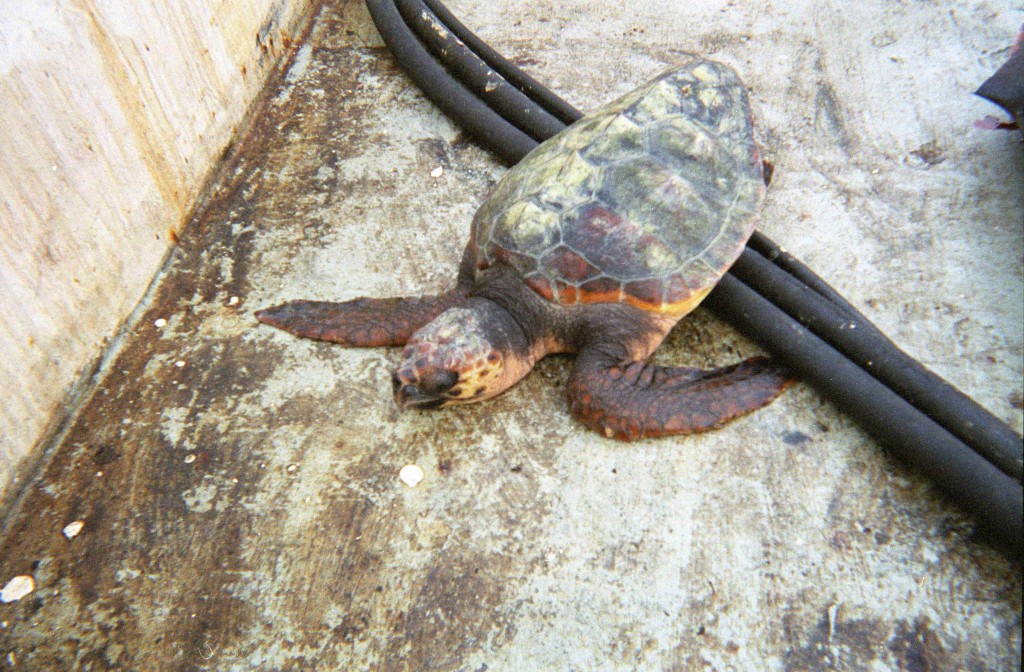
The final blow to drift gillnet fishing may come from Sacramento, where a bill to do away with drift gillnet permits would essentially outlaw the practice, as is done in Oregon and Washington (The first hearing on AB 2019 is April 29). Instead, fishermen would obtain general permits to catch swordfish and shark and would be forced to use alternative gear types such as harpoons and buoy gear (single lines that hang down). That could change the swordfish and shark industry considerably.
“With harpooning, it takes a certain level of skill and physical effort to harpoon a swordfish,” said Blacow. “With a gillnet, you just lay out the net in the evening and let it sit for 12 hours and then in the morning you just pull the net in.”
No official opposition has surfaced against the bill yet, said Yong Eo, a spokeswoman for the bill’s author, Assemblymember Paul Fong, D-San Jose, who was also behind the recent shark fin ban.
“Our goal is not to shut down the fishery,” said Eo. “Our goal is just to remove that gear type because of the high bycatch and the harm to endangered species as well.”

Meanwhile, the drift gillnet images are bound to help the cause. Oceana’s release is the first time most of these photographs have been seen by the public, and a word to the sensitive: they are disturbing.
“You have a lot of iconic marine life in the net,” said Blacow. “They just cut off the fins of these animals. Some of the photos we received, the dolphins and porpoises don’t have tails and that’s the likely reason why.”

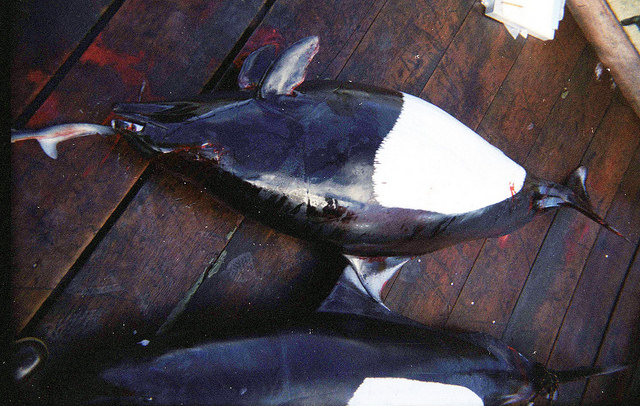
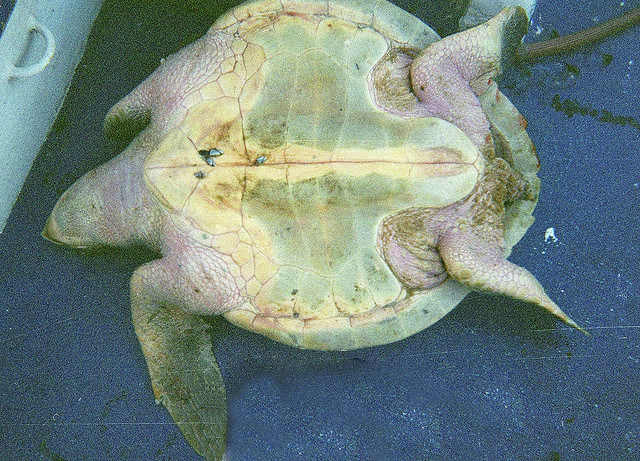
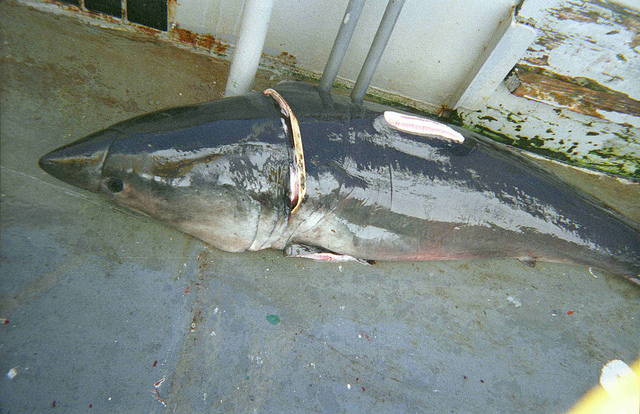


Alison Hawkes is the online editor of Bay Nature.

